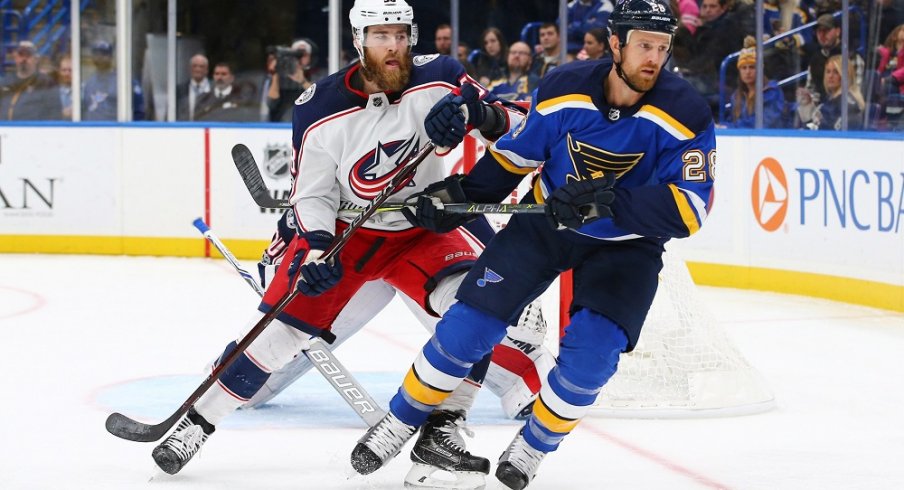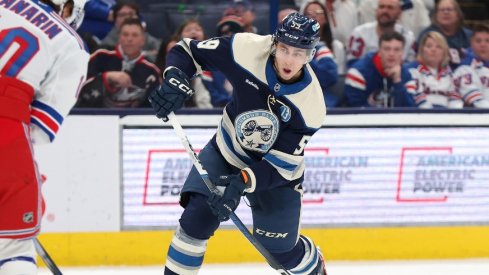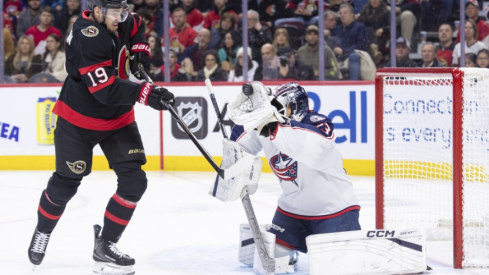There’s little dancing around it at this point: The Blue Jackets power play is struggling.
So let’s not worry about that right now.
On the other side of things, the Columbus penalty kill has been just about as good as the power play has been bad.
While the power play sits at 8.8 percent, worst in the NHL, the penalty kill has turned aside 27 of 32 opposing chances (84.3 percent), giving the Jackets the sixth-rated kill in the league. It was so good to start the year, in fact, that foes went 18 consecutive power-play chances to begin the season in Nationwide Arena before Boston potted a man-advantage goal in Monday night’s game.
Even that goal – which snapped a six-game streak in which the Jackets’ penalty kill was unblemished – took some weirdness to take place. Blue Jackets penalty killer extraordinaire Matt Calvert took a spill and lost both a glove and his stick; by the time he chased them down, the unit was discombobulated enough that Patrice Bergeron was able to rifle a shot past Sergei Bobrovsky from the high slot.
Later, Brad Marchand also scored on a 5-on-4 to allow Boston to finish 2 for 4 on the power play, making the Bruins just the second team to score multiple man-up goals against the Blue Jackets this year after Minnesota did so Oct. 14.
All in all, though, the penalty kill has been one of the most dependable units for a Blue Jackets team off to a strong start at 8-4-0. So what goes into a good penalty kill? A good bit of grit and hustle is necessary. Smart decisions must be made. And schematically, breaking up plays at the blue line before they can develop and working in unison are big keys.
“I think we’ve done a real good job on entries – just not having them come in smoothly and breaking some plays up,” Tortorella said. “I think (assistant Brad Shaw) has done a great job with the whole group, when to be aggressive and not to be aggressive, just working with cohesion.
“He has shown a number of clips where one guy goes and three guys aren’t, and it puts us in trouble. He’s really trying to get them to all simultaneously on reads make decisions of being aggressive, all go, and times when you can’t, sit tight. I think it’s coming.”
In no game was the penalty kill as important as Friday night’s 2-1 win in overtime at Nationwide Arena vs. Winnipeg. The Jets had three power plays in the first period and six overall but could not score, allowing the Jackets to earn a comeback win.
After the game, there was a nearly unanimous but seemingly divergent opinion. One, the Blue Jackets don’t want to take as many penalties as they did against the Jets, but that the penalty kill’s effectiveness helped ignite a Columbus team that appeared to sleepwalk during the opening minutes of the game.
“I thought our penalty kill gave us a lot of momentum,” Cam Atkinson said after that game. “When there weren’t a lot of things going on, it gave us a lot of momentum. We shut them down, and they have a pretty good power play. We don’t want to be in the box all night, but we did a really good job.”
Atkinson was unable to take the ice against the Bruins, but Columbus used a similar group of players on its penalty kill as in much of the season.
Perhaps the team’s most important killers the past two years is the duo of defensemen Jack Johnson and David Savard, but Seth Jones led the Jackets in penalty kill time Monday. Ryan Murray also played a key role from the blue line, while the Jackets rotated in Calvert, Brandon Dubinsky, Boone Jenner and Alexander Wennberg as the key killers with help from Markus Hannikainen, Nick Foligno and Josh Anderson.
“Special teams have to be your best asset,” Atkinson said.
While the power play continues to be a work in progress, the penalty kill largely has been a bright spot for the Jackets thus far.


